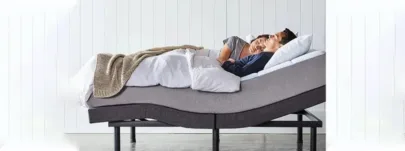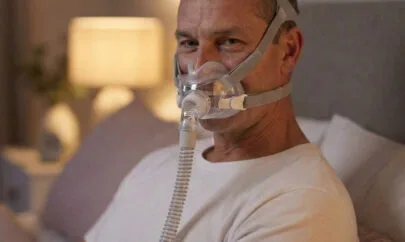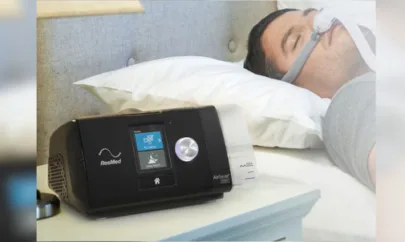
Are Adjustable Beds Effective in Relieving Sleep Apnea?
CPAP treatment is accepted by experts as being the most effective for sleep apnea, but it may not be required in milder cases.
A change in sleeping position can often be enough to offset the worst effects of obstructive sleep apnea. To this end, all that may be required is an adjustable bed or adjustable mattress.
Sleeping Position
Sleeping on one’s back allows the soft tissue in the throat and around the tonsils to slip backward as the body relaxes. This is normal and usually not a problem – although it can lead to snoring.
For those with OSA, however, the air passage becomes severely constricted or blocked which causes you to briefly awaken as the body struggles for air and seeks to rectify the problem.
An adjustable bed or mattress can dramatically reduce the risk of a blocked airway as it allows the sleep apnea patient to change the angle of rest.
Raising the head by only a few degrees may help keep the airway free of obstruction. This slight change in position may be sufficient but more serious issues may require more dramatic changes in sleeping position.
Many adjustable beds have a wide range of settings with some even allowing for sleeping in an almost upright position.
Changing from sleeping flat on one’s back to sleeping at an angle can take time to get accustomed to – but the improved quality of sleep more than makes the effort worthwhile.
Adjustable Bed Benefits
Using an adjustable bed or mattress will not cure sleep apnea but can certainly help people with OSA get an all-important good night’s sleep.
A significant proportion of sleep apnea patients sleep on their back, which is the worst posture to assume as it allows the tongue to slip backwards.
Sleep experts recommend sleeping on the side but some people find this awkward and uncomfortable. Using an adjustable bed allows for sleeping on one’s back – but with the head and shoulders elevated which helps keep the air passage free from obstructions.
Reduced Snoring
Another advantage of sleeping with the head elevated is that it reduces pressure on the neck and throat. This has been shown to reduce the level of snoring in OSA patients and particularly those who are overweight.
Reduced Acid Reflux
Similarly, sleeping with the head in an elevated position greatly reduces the incidence of heartburn or acid reflux which is a well-known side-effect of sleep apnea.
While reduced acid reflux and a drop in the amount of snoring may seem trivial in the overall scheme of things, they are a welcome bonus in the battle against the effects of OSA.
Being able to adjust a bed to one’s personal preferences will help anybody to sleep better. However, those with OSA may find it particularly beneficial as it may help prevent the pauses in breathing which disrupt a night’s sleep.
The Right Adjustable Bed
There are literally thousands of different makes and models of adjustable beds available on the market today and choosing the most suitable one is not always a simple task.
Step One is to seek professional advice about the type of bed best suited to your individual needs. Most beds will allow for the head and shoulders to be raised but some can also raise the lower body and feet.
Of course, the bigger the range of settings and options that come with the bed, the higher the price.
In most cases, a basic model with basic functions will probably be sufficient – but the final choice should be based on how comfortable and effective the bed will be – and how much it can improve sleep quality.
For people with sleep apnea, being able to raise the head and shoulders to the desired angle will probably be the prime concern but all physical requirements should be taken into consideration. This is particularly true for older people with OSA or those with physical difficulties.
As we’ve noted, the ability to alter one’s sleeping position is not going to cure OSA – but it can go a long way to minimizing the cause and alleviating the effects of the condition.
Source:
https://www.medicalnewstoday.com/articles/best-mattresses-for-sleep-apnea#hybrids








